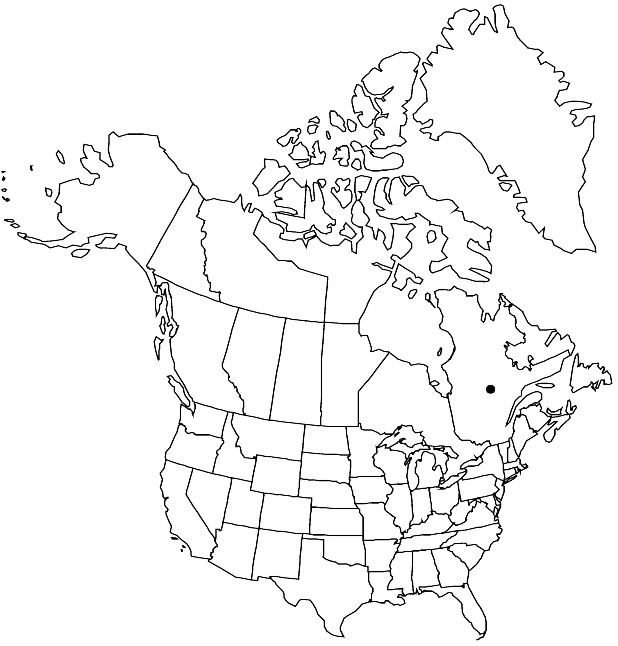Salix chlorolepis
Rhodora 7: 186. 1905.
Plants 0.15–0.2 m, not clonal. Stems erect; branches red-brown, (weakly glaucous), glabrous; branchlets yellow-brown, glabrous. Leaves: stipules absent or rudimentary; petiole (deeply to shallowly grooved adaxially), 1–3.5 mm; largest medial blade elliptic, oblanceolate, or obovate, 14–33 × 7–12 mm, 1.9–3.4 times as long as wide, base cuneate or convex, margins flat or slightly revolute, entire, ciliate, apex acute, convex, or rounded, abaxial surface glabrous, adaxial slightly glossy, glabrous; proximal blade margins entire; juvenile blade (sometimes reddish), glabrous, ciliate. Catkins: staminate 6.5 × 5–8 mm, flowering branchlet 1–3 mm; pistillate densely flowered, stout or subglobose, 7–12 × 3–6 mm, flowering branchlet 1.8–12 mm; floral bract tawny, brown, or greenish, 1–2.6 mm, apex broadly rounded to retuse, entire, abaxially glabrous. Staminate flowers: abaxial nectary 0.3–0.4 mm, adaxial nectary oblong, 0.5–0.8 mm, nectaries distinct; filaments distinct, glabrous; anthers ellipsoid, 0.4–0.6 mm. Pistillate flowers: adaxial nectary narrowly oblong, 0.9–1.6 mm, longer than stipe, nectaries distinct or connate and shallowly cup-shaped; stipe 0–0.4 mm; ovary pyriform, glabrous, beak abruptly tapering to or slightly bulged below styles; ovules 8–10 per ovary; styles connate to distinct 1/2 their lengths, 0.5–1.3 mm; stigmas flat, abaxially non-papillate with rounded tip, or slenderly cylindrical, 0.3–0.6 mm. Capsules 3.6–6 mm. 2n = 38.
Phenology: Flowering Jul-early Aug.
Habitat: Wet Sphagnum bog on alpine, serpentine barrens
Elevation: 1000-1200 m
Discussion
Of conservation concern.
Salix chlorolepis, known from Mt. Albert, is characterized by its general glabrousness. It seems to have a relationship with S. brachycarpa similar to that of S. raupii to S. glauca. Both may have originated through mutation or hybridization.
Hybrids:
Salix chlorolepis forms natural hybrids with S. brachycarpa var. brachycarpa.
Salix chlorolepis × S. pedicellaris is a putative hybrid that has relatively small, glabrous leaves. Both parents occur together on Mt. Albert, Quebec.
Selected References
None.
